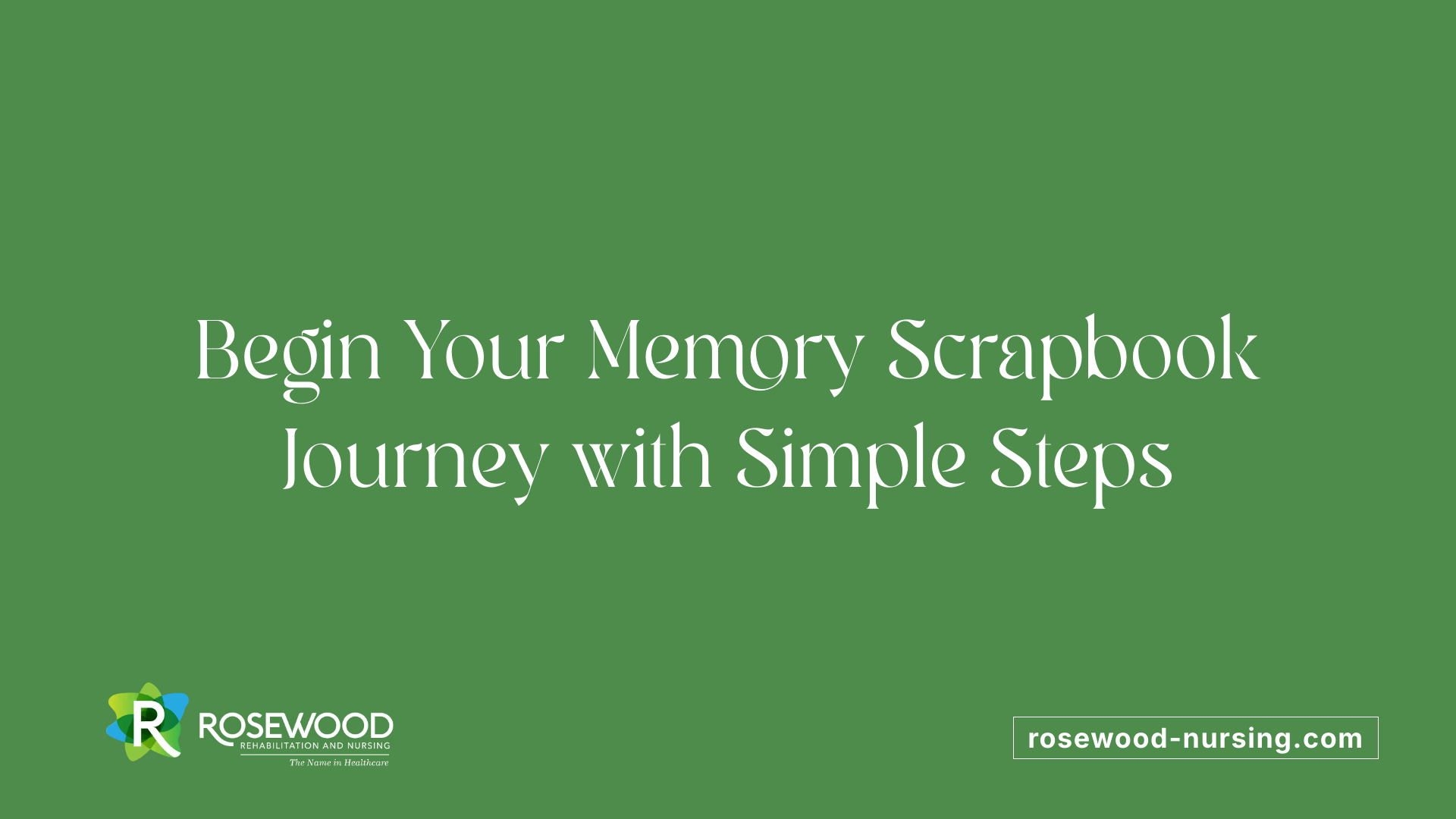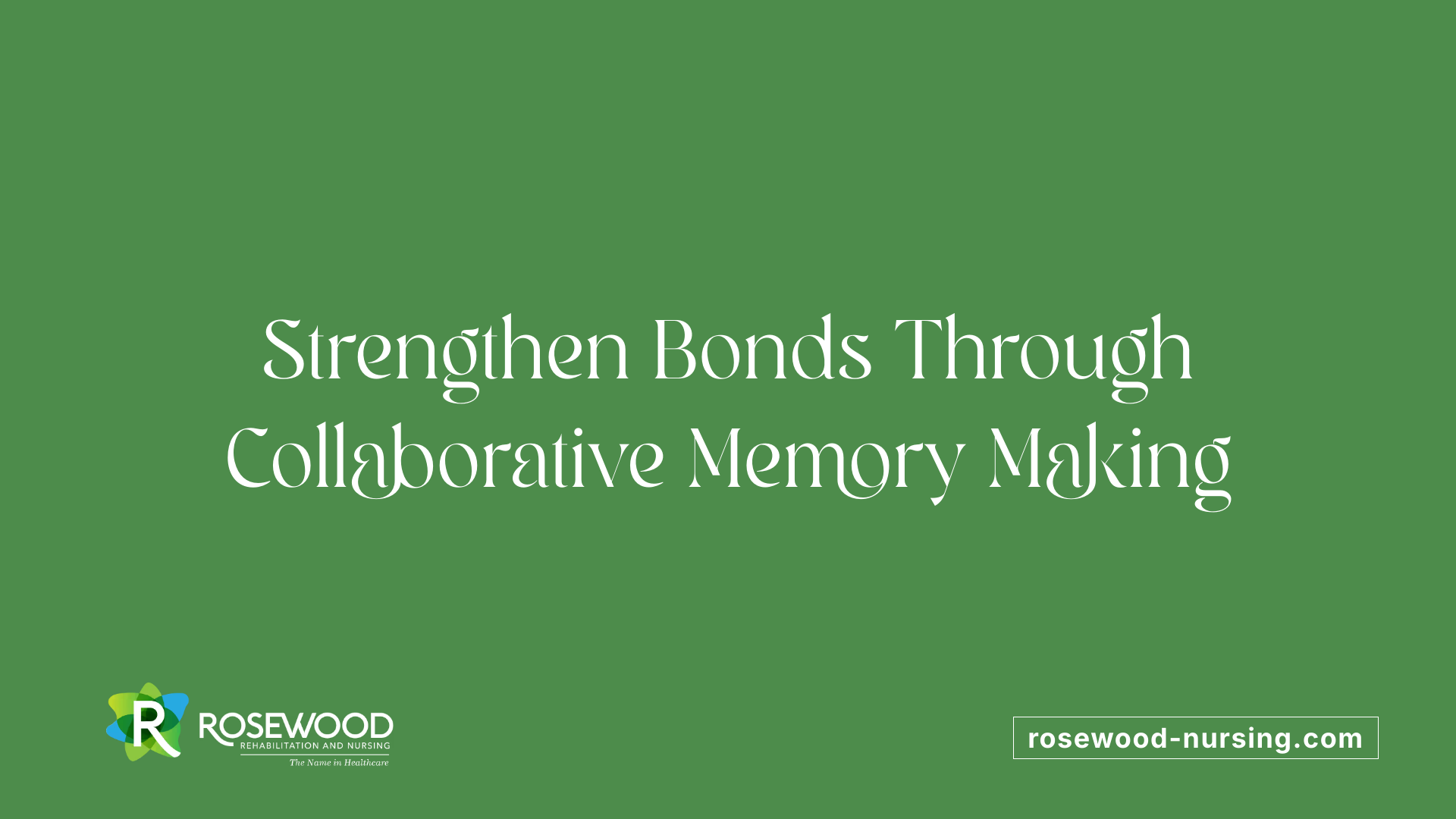How to Build a Memory Scrapbook with Your Loved One in Care
June 17, 2025
Cherishing Memories: A Guide to Crafting Personalized Memory Books

Creating Lasting Bonds Through Memory Preservation
Building a memory scrapbook with your loved one in care is a meaningful activity that fosters connection, stimulates cognition, and celebrates a lifetime of experiences. Whether your loved one has dementia, Alzheimer’s, or simple memories worth preserving, this guide offers practical advice, techniques, and creative ideas to craft a cherished keepsake that reflects their unique story. Through patience, creativity, and compassion, you can transform simple mementos into a treasured legacy that brings joy and reassurance.
Understanding the Benefits of Memory Scrapbooks in Care Settings

What are the benefits of making memory scrapbooks for loved ones with dementia or in memory care?
Creating memory scrapbooks offers numerous advantages for individuals experiencing dementia or in memory care. These personalized projects serve as stimulating tools that engage brain areas involved in long-term memory, decision-making, and cognition. The activity not only helps in maintaining mental agility but can also improve existing memories, fostering a sense of identity and continuity.
Engaging with a memory scrapbook provides a meaningful opportunity for social interaction. Family members and caregivers can participate, sharing stories and reminiscing, which strengthens emotional bonds and reduces feelings of loneliness. The visual cues, such as photographs and keepsakes, evoke positive emotions and help individuals reconnect with past experiences.
Additionally, the tactile nature of scrapbooking can improve fine motor skills, providing sensory stimulation that supports physical dexterity. Completing a scrapbook gives a sense of achievement, boosting self-esteem and purpose, and ultimately enriching the individual’s quality of life.
Memory scrapbooks also act as comforting and familiar objects, helping to alleviate anxiety or distress during challenging moments. Ultimately, they function as treasured keepsakes that preserve important life stories and foster emotional resilience.
What practical advice should caregivers and family members keep in mind regarding the importance and impact of memory scrapbooks?
For caregivers and family members, understanding the value of memory scrapbooks can shape meaningful caregiving practices. These activities are more than simple memory triggers; they are powerful tools for supporting cognitive health and emotional well-being. When creating a scrapbook, patience and flexibility are essential—focusing on enjoyment and shared positive experiences rather than perfection.
Involving loved ones in gathering photographs, mementos, and stories makes the process more impactful. Personalizing the scrapbook with captions, dates, and context helps evoke specific memories and facilitates conversation. Including a variety of materials such as photographs of family members, pets, and significant life events can provide rich cues for reminiscence.
Caregivers should also consider the format best suited to the individual—whether physical or digital. Digital options like programs from Mixbook, Shutterfly, or Snapfish allow for customization and easy updates. Creating themed sections—such as childhood, holidays, or special milestones—can help organize memories in a manageable way.
By emphasizing the activity’s therapeutic potential, caregivers can foster a nurturing environment that promotes mental stimulation, emotional connection, and a lasting legacy. The effort involved in creating a memory scrapbook not only enriches the person’s life but also builds stronger familial bonds, turning the activity into a cherished tradition.
Overview of Scrapbooking Techniques and Organization Steps
To make the most of memory scrapbooks, it’s helpful to consider effective techniques and organizational strategies. Gather a variety of old and recent photographs, keepsakes, and meaningful items like ticket stubs or clothing. Organize these materials into themed sections rather than strictly chronological order, such as childhood, family holidays, or career milestones.
Include detailed captions that provide context, dates, location, and accompanying stories. If communication is limited, family and friends can contribute recollections to enrich the content.
For format, options range from traditional physical scrapbooks and photo albums to digital books that can incorporate music, videos, and interactive elements. Digital scrapbooks can be easily shared with family members who live afar, ensuring that memories are preserved and accessible.
Additional mementos, such as a memory box filled with items for exploration, can complement the scrapbook. Creating interactive activities like interviewing loved ones and recording stories can actively involve individuals and deepen the reminiscence process.
Involving children or other family members in the creation process adds layers of meaning and strengthens multigenerational bonds. Ultimately, the structure and approach should be tailored to the individual’s preferences and cognitive abilities, making the activity both accessible and rewarding.
Engaging Formats, Themes, and Starting Approaches
Memory scrapbooks can be tailored in many ways to suit individual interests and needs. Popular themes include childhood adventures, family traditions, holidays, pets, hobbies, and significant life events.
Beginners might start by collecting a small set of photographs or keepsakes and gradually add more material over time. Using prompts such as
Getting Started: Gathering Materials and Involving Your Loved One

How should I approach and start the process of making a memory scrapbook with a loved one experiencing memory loss?
When beginning a memory scrapbook with a loved one facing memory challenges, it’s important to start gently. Begin by collecting familiar and meaningful items such as old photographs, keepsakes, letters, or objects that evoke positive feelings. These items should resonate with your loved one’s personal history and comfort them.
Engage the individual with simple, open-ended questions designed to spark memories. For example, ask about their favorite holidays, hobbies, or special moments related to the items you're gathering. Focus on creating positive, manageable experiences that promote reminiscence without causing frustration.
Organize the collected materials into an accessible format, like a themed photo album or a pocket-style scrapbook. Using familiar, easy-to-handle formats makes the activity more enjoyable and less overwhelming.
Personalize the process by adding captions, quotes, or annotations that relate to the items. This helps to reinforce the memories and provides context during visits or storytelling sessions.
Throughout the activity, maintain a patient and flexible attitude. Watch for cues indicating if your loved one is tired or distressed, and pause if needed. Making this activity a soothing, positive experience can strengthen your bond and support their emotional health.
What effective techniques and steps are involved in creating the scrapbook?
Creating a memorable scrapbook involves several thoughtful steps. First, gather a variety of meaningful photographs, keepsakes, and memorabilia that reflect significant moments in your loved one’s life.
Next, organize these items either thematically—such as childhood, family, holidays, pets—or chronologically along a timeline. The choice depends on what feels most intuitive and accessible for your loved one.
Involve your loved one in selecting items for the scrapbook. Encourage them to share stories associated with each piece, asking questions like 'Do you remember this day?' or 'Who is this person?' This encourages reminiscence and active participation.
Use simple, practical supplies such as adhesive, decorative paper, photo corners, and protective sleeves. Consider incorporating multimedia elements like scanned digital photos or recordings, especially if your loved one is comfortable with technology.
Add captions, stories, dates, or quotes to each page to provide context and spark additional memories. Embellishments like stickers or mementos enhance visual interest without overwhelming the content.
Personalizing the scrapbook is vital. Include items such as tickets, small souvenirs, or handwritten notes that deepen the narrative of their life.
Throughout the process, keep the activity gentle and unhurried. Celebrate small successes and allow your loved one to take the lead where possible. This approach ensures the creation of a meaningful, personalized memory keepsake that fosters connection and joy.
Choosing the Right Format and Content for Your Memory Book

What are suitable formats, contents, and themes for memory scrapbooks tailored to care recipients?
Selecting the appropriate format for a memory book depends on the recipient's preferences and abilities. Popular options include traditional bound albums, ring-bound books, or digital photo books. These allow for easy addition and removal of pages and can be personalized to suit individual needs.
Content is equally important. Incorporate family photos, significant milestones, travel memories, childhood days, hobbies, pets, and other memorabilia like tickets or pressed flowers. Personal notes, quotes, and handwritten stories help give context and deepen the emotional connection.
Themes serve to organize the scrapbook in a meaningful way. Choose themes based on important life events, achievements, or shared interests. For instance, a travel theme might highlight journeys taken, while a family theme centers around loved ones and special occasions.
To ensure the longevity of these materials, opt for archival-quality, acid-free paper and photo albums. Decorative elements—such as sketches, monograms, handmade embellishments—add unique touches. Multi-sensory or interactive features, like QR codes linking to audio recordings or textured objects, can further enhance engagement and create a richer memory experience.
Creating a personalized, accessible, and richly detailed memory book helps preserve stories and promotes emotional well-being for care recipients.
How should I organize and construct a memorial or memory scrapbook to maximize its impact?
Effective organization begins with clarifying the main purpose of the scrapbook—whether to celebrate specific milestones, reconnect with past experiences, or provide comfort. Gather materials such as photographs, mementos, letters, or stories shared by family and friends.
Arrange the content either chronologically, following the person's life story, or thematically, grouping items by topics like family, achievements, or hobbies. Decide on a format—traditional album, digital compilation, or themed scrapbook—that suits the recipient’s needs.
Plan each layout carefully, including captions, quotes, or poetry that add personal meaning. Incorporate memorabilia like tickets, greeting cards, or pressed flowers to deepen storytelling.
Personal touches are vital—use decorations, journaling, and reflections to make each page heartfelt and unique. The goal is to create a tribute that not only preserves memories but also provides comfort and a sense of identity. Proper organization and thoughtful design make the scrapbook a lasting, impactful keepsake that honors the person's life story.
Involving Loved Ones and Enhancing Connection

How can collaborative storytelling foster stronger bonds?
Creating a memory book is more than just compiling photos and mementos; it is an opportunity for shared storytelling that can significantly strengthen emotional bonds. When loved ones and individuals with dementia sit together to reminisce and discuss memories related to each page, it creates a space of connection and understanding. Sharing personal stories about the photos, such as childhood experiences or family traditions, encourages emotional sharing and deepens the sense of shared history.
Encouraging open dialogue during the process allows the person with dementia to feel valued and heard. This collaborative approach not only preserves important memories but also nurtures a sense of belonging, making the activity meaningful and rewarding for both parties.
How does participation in choosing and decorating personalize the memory book?
Involving the loved one in selecting and decorating the pages of the memory book makes the experience highly personal and empowering. Letting them choose favorite photos, add captions, or decorate with stickers and embellishments allows their personality and preferences to shine through. This participatory process helps reinforce their sense of identity and autonomy.
It also provides sensory and motor stimulation through activities like placing photos or sticking decorative items, which can be particularly beneficial for those with cognitive decline. Customizing the book in this way turns it into a cherished keepsake that truly reflects their life story.
Why is creating a relaxing environment important during the activity?
A calm, supportive environment is crucial for a positive and meaningful memory book session. Ensure the space is quiet, comfortable, and free from distractions or interruptions. Soft lighting, soothing background music, and easy-to-reach materials can help create a peaceful atmosphere.
This relaxed setting encourages open communication and emotional expression, reducing potential frustration or agitation. It also helps the individual feel safe and understood, making the activity enjoyable rather than stressful. When the environment fosters patience and calmness, it maximizes engagement and enhances the emotional benefits of crafting the memory book.
How can sharing and displaying the memory book deepen connections?
Once completed, sharing the memory book with family, friends, and community can be incredibly enriching. Displaying the book at home or in care facilities invites ongoing conversations, revisiting old stories and creating new shared experiences.
It acts as a tangible link to the past, providing comfort and familiarity. Viewing the memory book together can stimulate memories and emotions, encouraging social interaction and strengthening relationships. Additionally, exhibiting the book at family gatherings or special events makes the individual feel celebrated and connected, fostering ongoing bonds.
| Strategy | Description | Benefits |
|---|---|---|
| Collaborative storytelling | Share memories and personal stories during the process | Enhances emotional connection and memory retrieval |
| Participatory choice & decoration | Involve loved one in selecting photos and decorations | Personalizes the book and promotes autonomy |
| Creating a relaxing environment | Use comfortable space and calming tools | Increases engagement and reduces stress |
| Sharing and displaying | Show the finished work to loved ones | Deepens relationships and reinforces memories |
Involving loved ones actively in creating and sharing a memory book enriches emotional health, stimulates cognition, and fosters enduring connections. Such shared activities turn the process of remembrance into an opportunity for warmth, pride, and continued bonding.
Creating a Lasting Legacy of Love and Reminiscence
Crafting a memory scrapbook with your loved one in care is more than an activity; it is a profound way to celebrate their life, reinforce their identity, and deepen emotional bonds. By thoughtfully gathering photos, memorabilia, and stories, and engaging your loved one at every step, you create a personalized legacy that can be treasured for generations. This process not only stimulates cognition and promotes psychological well-being but also provides comfort, joy, and a sense of achievement for your loved one. Remember, patience and creativity are key, and the small moments shared during this journey often become the most meaningful memories of all.
References
- How to Create a Memory Book That Tells Your Senior Loved ...
- The Dementia Caregiver's Guide to Scrapbooking
- Creating a Memory Book with Your Loved One
- Creating a Memory Book for Elderly Adults
- Making Memories with an Aging Loved One
- memory books | Dementia Support Forum - Alzheimer's Society
- How Can Scrapbooking Help Memory Care Residents?
- The Dementia Caregiver's Guide to Scrapbooking
- How to Create a Memory Book That Tells Your Senior Loved ...
- Try This Creative Remembrance Idea for Deceased Loved ...
Similar articles

Exercise Videos For Seniors



The Role of Therapy Services in Preventing Falls in Elderly Residents

The Benefits of Pet Therapy in Long-Term Care Facilities

How to Encourage Participation in Therapy for Long-Term Care Residents
Contact us today and experience ”The Name in Healthcare”
Where compassion, well-being, and a welcoming community converge to redefine your healthcare journey. Welcome to Rosewood, where your family becomes our family.














